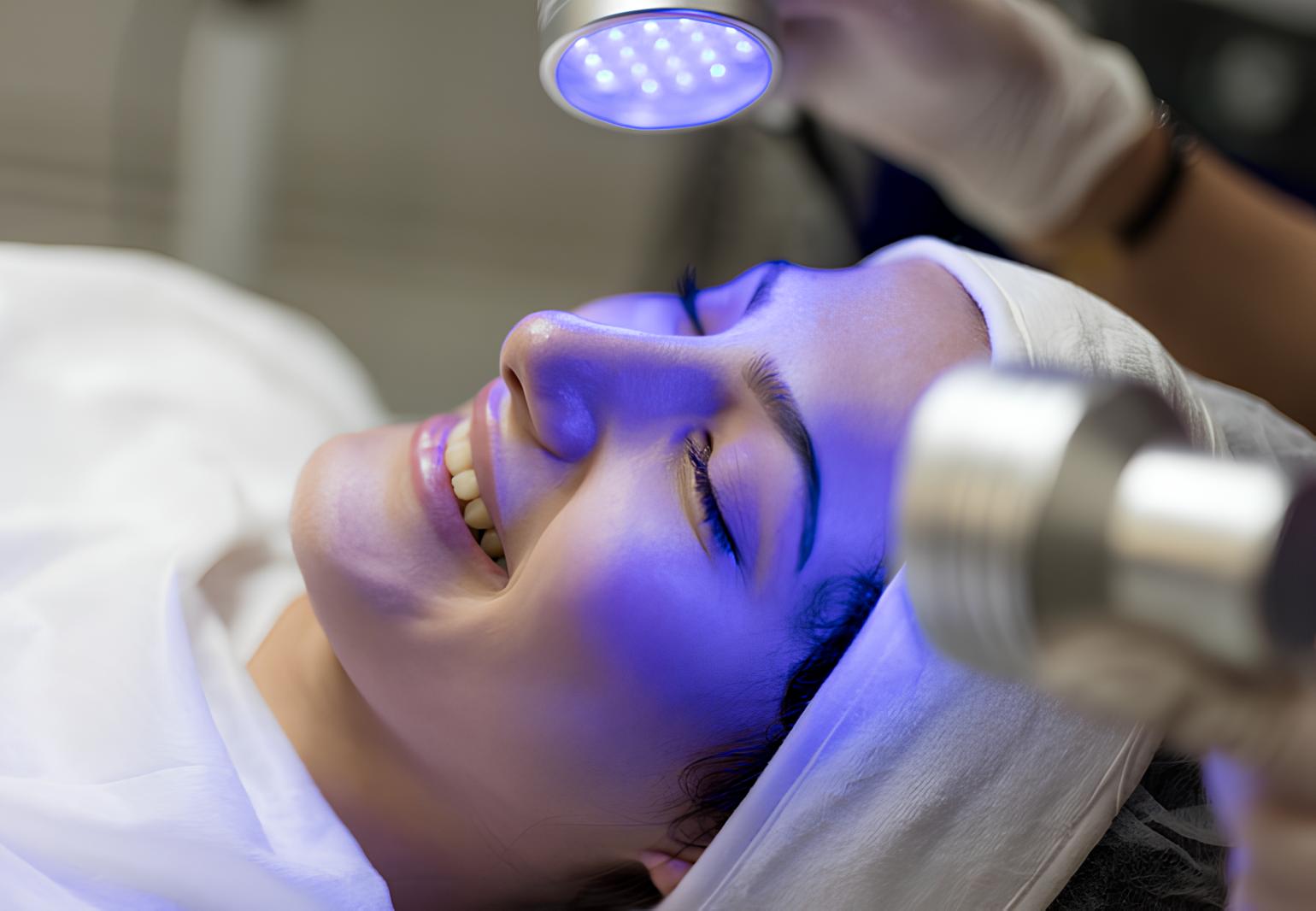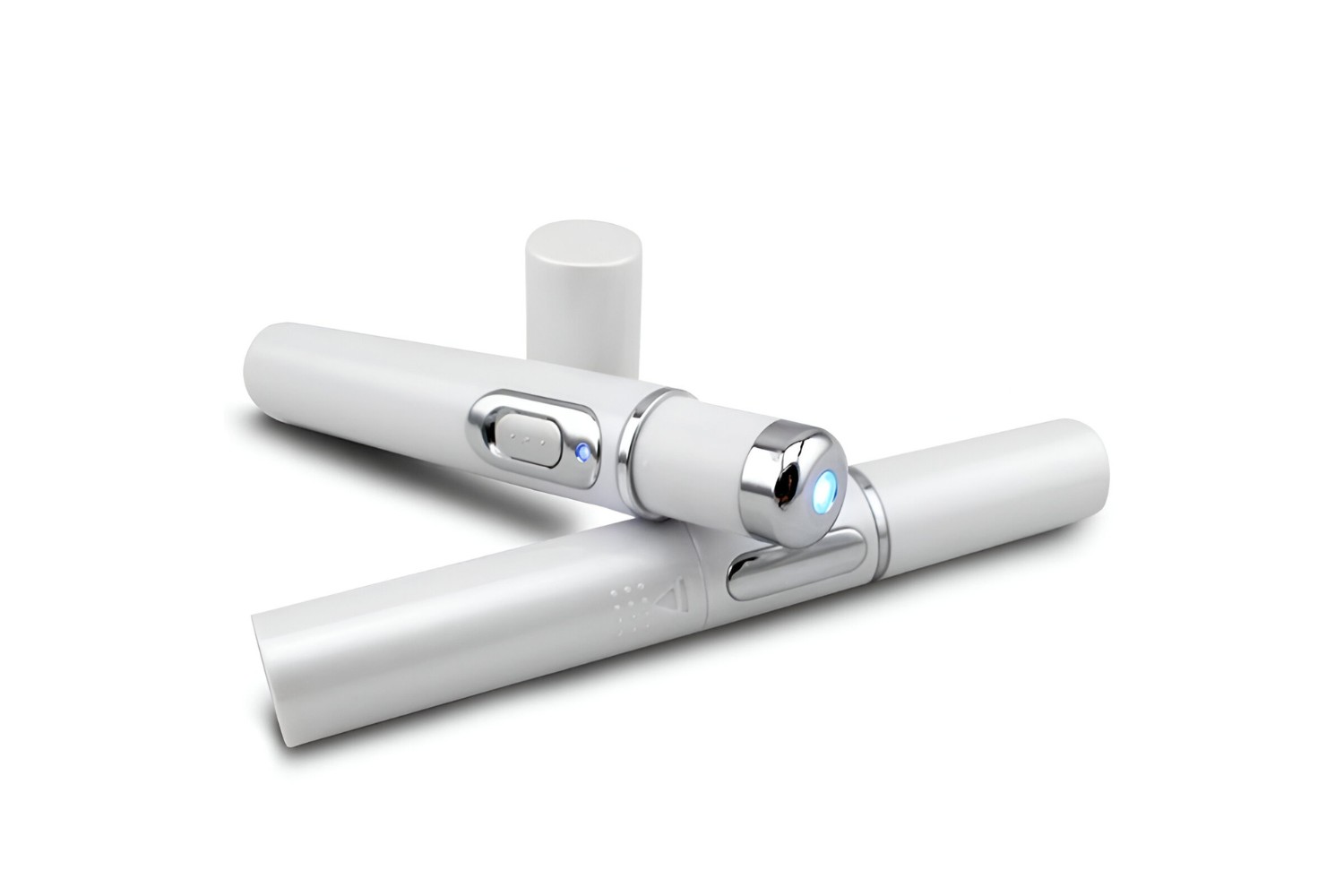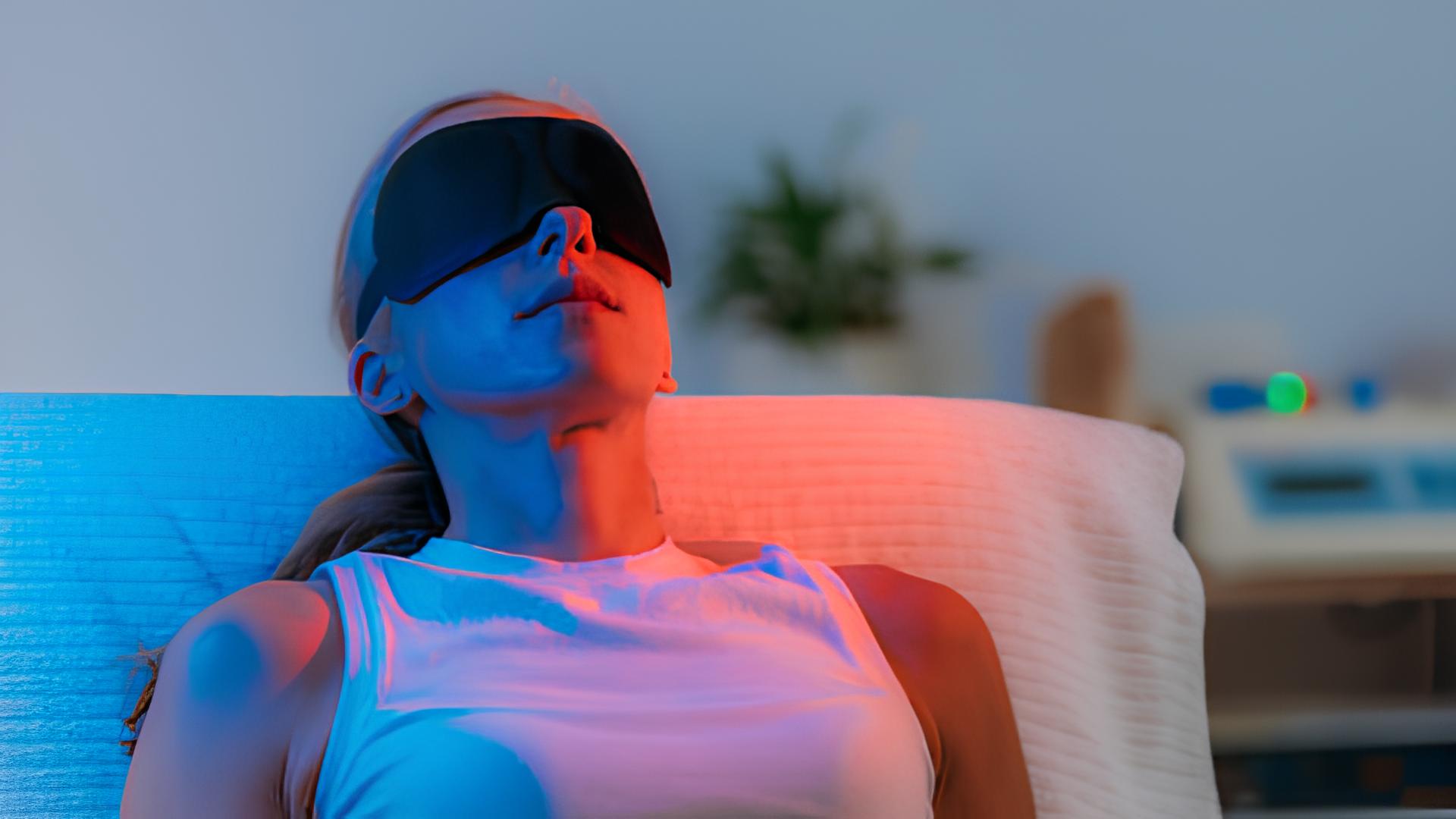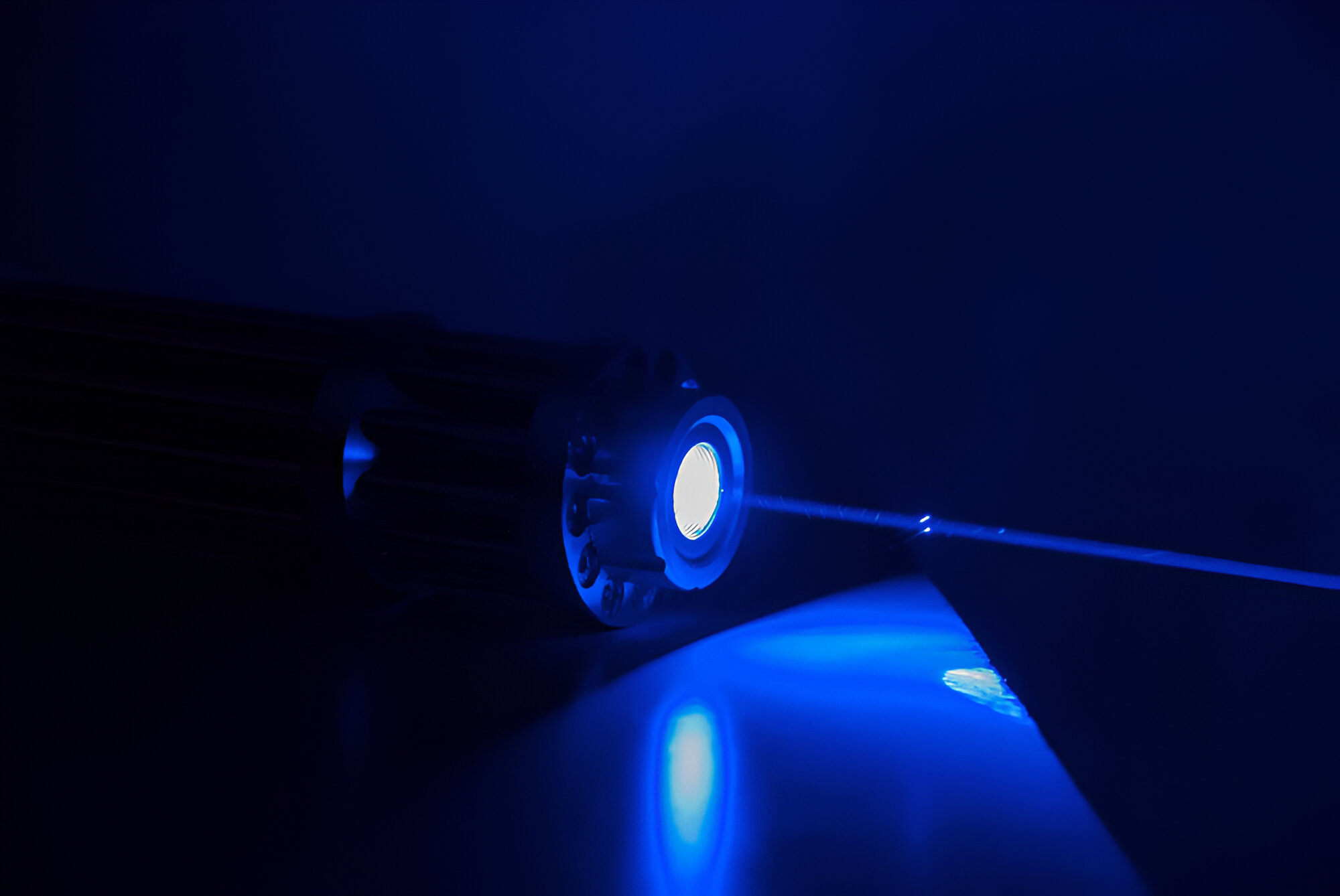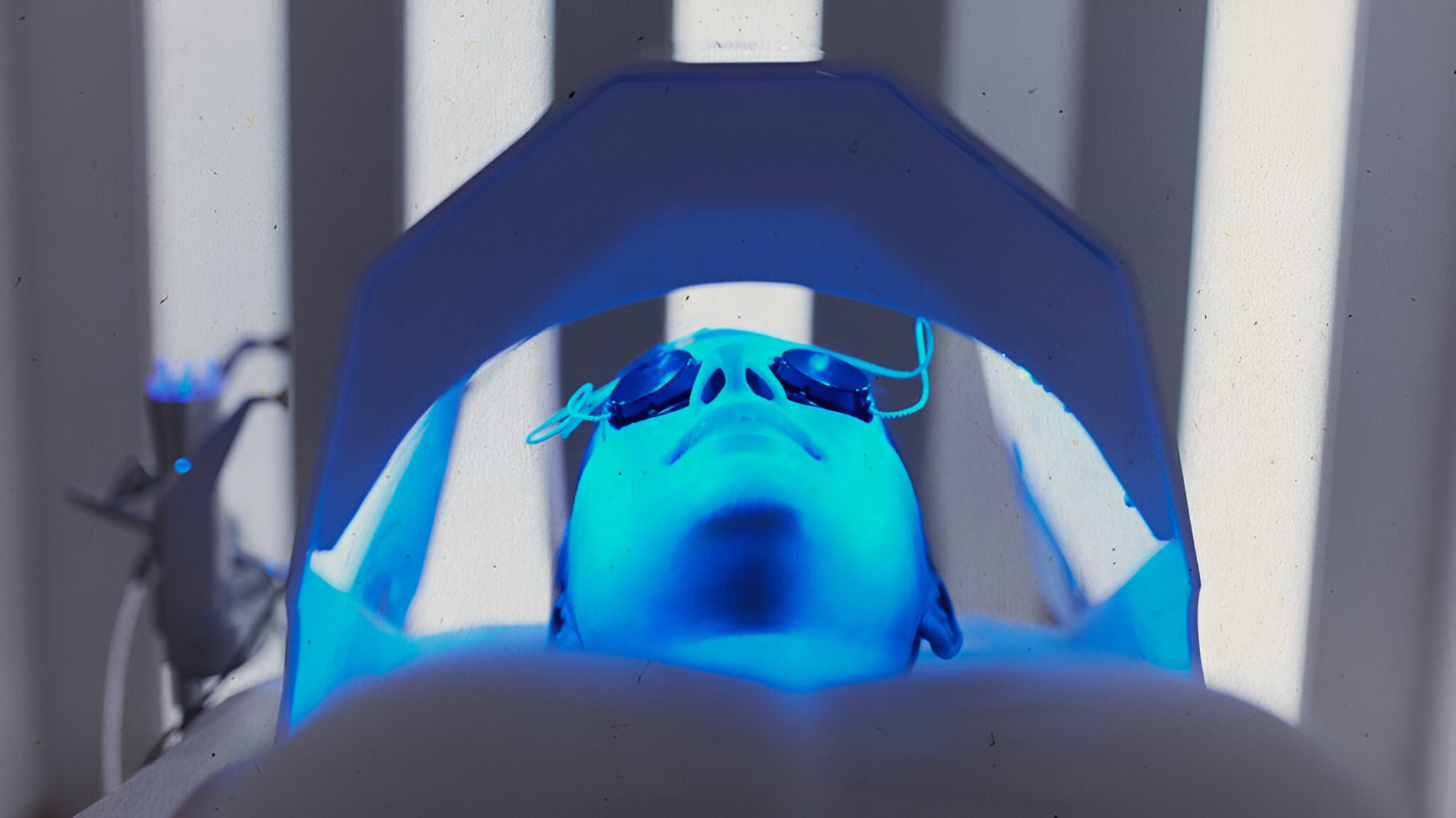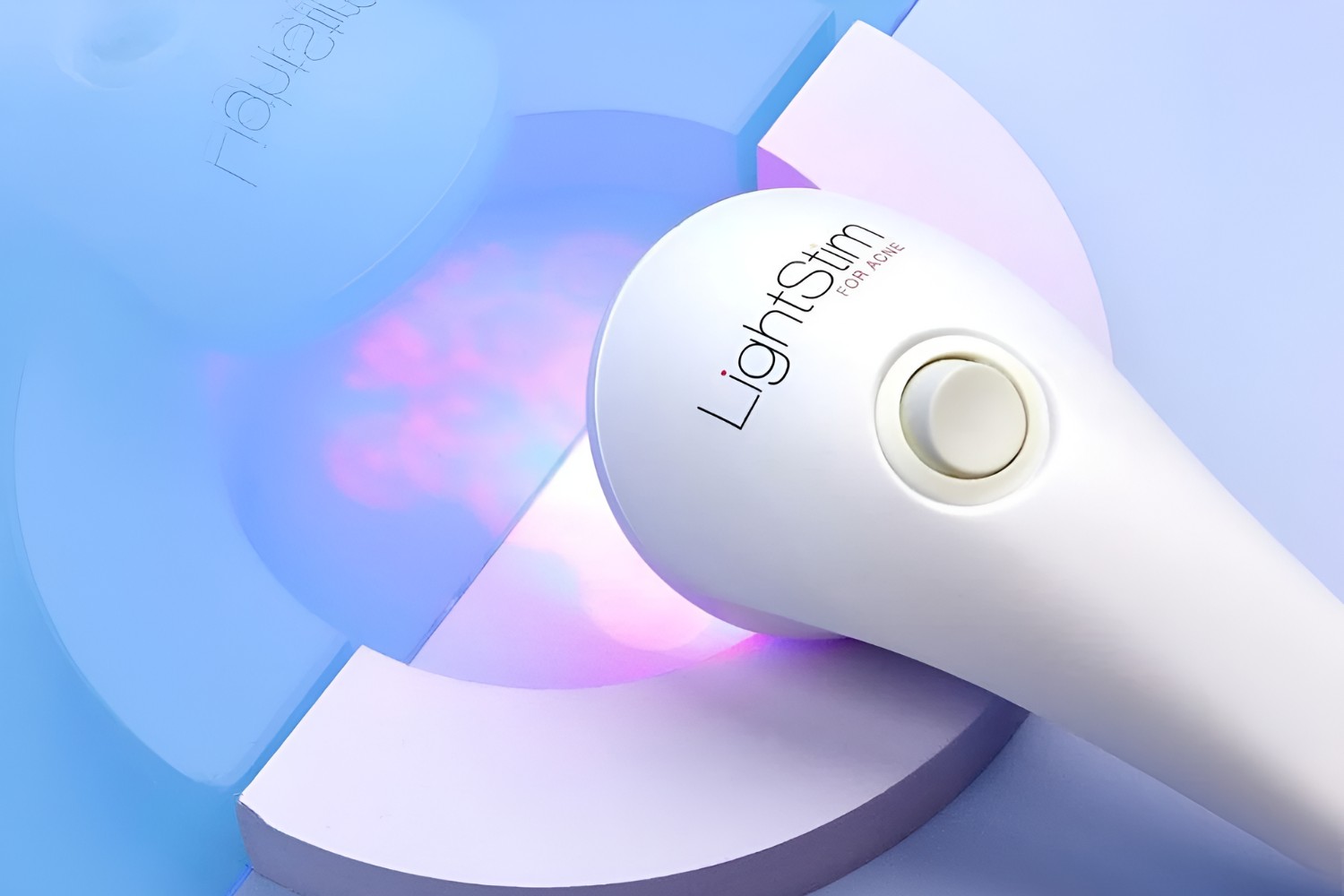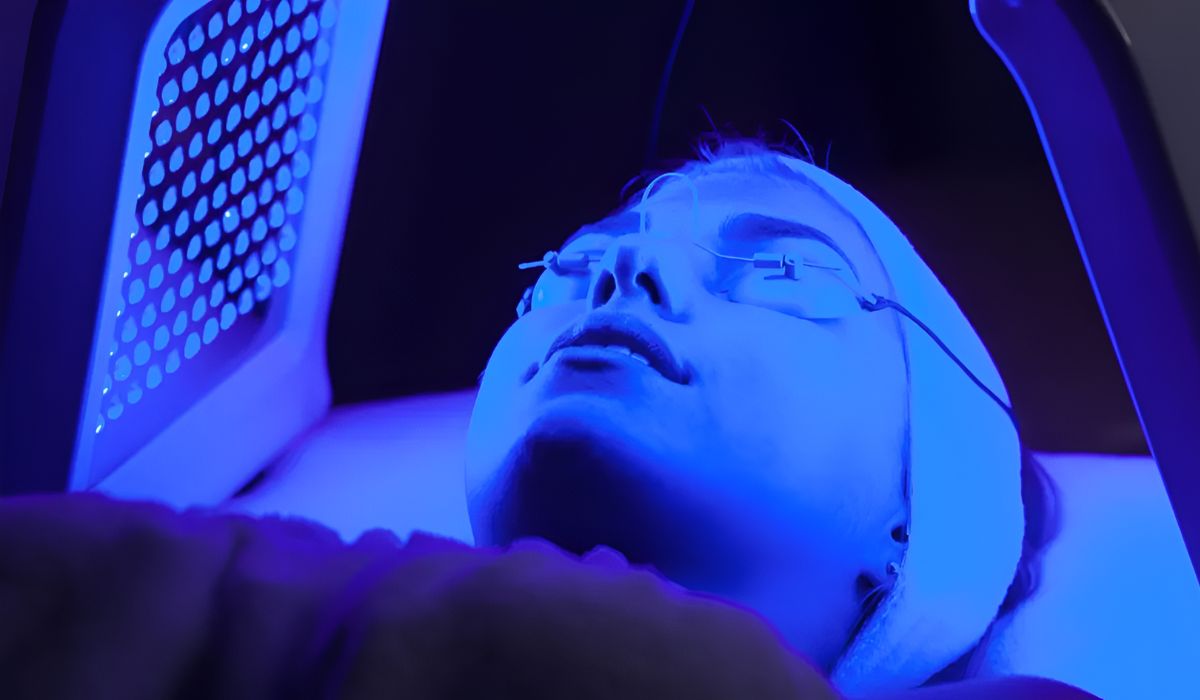Introduction
Blue light therapy, a groundbreaking treatment in dermatology, has garnered significant attention in recent years due to its remarkable efficacy in addressing various skin conditions. This innovative approach harnesses the power of specific wavelengths of light to target and alleviate skin issues, offering a non-invasive and gentle alternative to traditional treatments. As we delve into the intricacies of blue light therapy in dermatology, it becomes evident that this technique holds immense promise for individuals seeking safe and effective solutions for their skin concerns.
The emergence of blue light therapy represents a paradigm shift in dermatological care, revolutionizing the way practitioners approach common skin conditions. By understanding the underlying principles and applications of this treatment modality, patients and healthcare providers alike can explore its potential to enhance skin health and overall well-being.
In this comprehensive exploration, we will unravel the science behind blue light therapy, elucidate the conditions it effectively treats, and delve into the mechanisms through which it operates in dermatology. Furthermore, we will examine the compelling benefits and potential risks associated with this treatment, empowering readers to make informed decisions about their skincare journey. Additionally, we will provide insights into the preparation, procedure, aftercare, and recovery aspects of blue light therapy, offering a holistic understanding of what to expect throughout the treatment process.
As we embark on this enlightening journey into the realm of blue light therapy in dermatology, it is essential to recognize the transformative impact it has had on skincare practices. By delving into the nuances of this cutting-edge treatment, we aim to equip individuals with the knowledge and understanding necessary to navigate the realm of dermatological care with confidence and clarity.
The Science Behind Blue Light Therapy
Blue light therapy operates on the principle of utilizing specific wavelengths of light to target and address various skin conditions. This treatment modality harnesses the power of visible blue light, typically in the range of 405 to 420 nanometers, to penetrate the skin and exert therapeutic effects at the cellular level. The science behind blue light therapy revolves around its ability to interact with specific molecules within the skin, triggering biochemical reactions that yield beneficial outcomes for dermatological concerns.
At the core of blue light therapy lies the interaction between the emitted light and endogenous molecules known as porphyrins, which are naturally present in the skin. When exposed to blue light, these porphyrins become excited and produce a form of oxygen that is toxic to the bacteria responsible for acne, effectively eradicating the underlying microbial culprits. This antibacterial action serves as a cornerstone of blue light therapy's efficacy in managing acne and related inflammatory skin conditions.
Furthermore, blue light therapy influences the skin at a deeper level by modulating inflammatory responses and promoting tissue repair. The interaction between blue light and the skin's cellular components stimulates the production of beneficial molecules, such as reactive oxygen species, which contribute to the elimination of pathogens and the promotion of skin healing processes. This multifaceted approach underscores the comprehensive impact of blue light therapy on diverse dermatological concerns, ranging from acne to psoriasis.
In addition to its antibacterial and anti-inflammatory properties, blue light therapy also exhibits photodynamic effects, particularly in the context of treating precancerous skin lesions. By leveraging photosensitizing agents in conjunction with blue light exposure, dermatologists can selectively target and eliminate abnormal skin cells while preserving surrounding healthy tissue. This targeted approach minimizes collateral damage and underscores the precision with which blue light therapy can address specific dermatological conditions.
The scientific underpinnings of blue light therapy underscore its capacity to modulate cellular processes, combat microbial overgrowth, and promote skin rejuvenation. This amalgamation of biological responses underscores the versatility and efficacy of blue light therapy in dermatology, positioning it as a compelling and innovative modality for individuals seeking safe and non-invasive solutions for their skin concerns.
Conditions Treated with Blue Light Therapy
Blue light therapy has emerged as a versatile and effective treatment modality for a spectrum of dermatological conditions. Its remarkable efficacy stems from its ability to target specific skin concerns while offering a gentle and non-invasive approach to treatment. This innovative therapy has been found to be particularly beneficial in addressing the following conditions:
Acne
Blue light therapy has revolutionized the management of acne by targeting the root cause of the condition – the proliferation of Propionibacterium acnes (P. acnes) bacteria within the skin's oil glands. By emitting specific wavelengths of blue light, this therapy penetrates the skin and activates porphyrins, naturally occurring molecules that are sensitive to light. The excited porphyrins then produce reactive oxygen species, which effectively kill the P. acnes bacteria, thereby reducing inflammation and preventing acne breakouts. This targeted antibacterial action makes blue light therapy a valuable option for individuals seeking an alternative or adjunctive treatment for acne, particularly for those who may not tolerate or respond well to traditional therapies.
Actinic Keratosis
Actinic keratosis, characterized by the presence of rough, scaly patches on sun-exposed areas of the skin, represents a precancerous condition that necessitates prompt and targeted intervention. Blue light therapy, in combination with a photosensitizing agent, has demonstrated notable efficacy in addressing actinic keratosis by selectively targeting and eliminating abnormal skin cells. This photodynamic approach minimizes damage to healthy tissue while effectively treating precancerous lesions, thereby offering a promising solution for individuals at risk of developing skin cancer.
Psoriasis
The chronic and inflammatory nature of psoriasis poses significant challenges in its management, often necessitating a multifaceted treatment approach. Blue light therapy, specifically in the form of narrowband UVB (ultraviolet B) phototherapy, has emerged as a valuable therapeutic option for individuals with psoriasis. By delivering targeted UVB wavelengths, this form of blue light therapy modulates immune responses, reduces inflammation, and promotes the normalization of skin cell growth, thereby alleviating the symptoms of psoriasis and fostering skin healing.
Skin Rejuvenation
Beyond addressing specific skin conditions, blue light therapy has garnered attention for its potential in promoting overall skin rejuvenation. By stimulating collagen production, improving skin texture, and minimizing the appearance of fine lines and wrinkles, blue light therapy offers a non-invasive and gentle means of enhancing skin health and vitality. This rejuvenating aspect of blue light therapy underscores its versatility in catering to individuals seeking aesthetic enhancements and anti-aging interventions.
The diverse range of conditions effectively treated with blue light therapy underscores its broad applicability and transformative potential in dermatological care. As ongoing research continues to unveil new insights into its mechanisms and applications, blue light therapy stands as a beacon of hope for individuals seeking safe, effective, and innovative solutions for their skin concerns.
How Blue Light Therapy Works in Dermatology
Blue light therapy operates on the principle of utilizing specific wavelengths of light to target and address various skin conditions. This treatment modality harnesses the power of visible blue light, typically in the range of 405 to 420 nanometers, to penetrate the skin and exert therapeutic effects at the cellular level. The science behind blue light therapy revolves around its ability to interact with specific molecules within the skin, triggering biochemical reactions that yield beneficial outcomes for dermatological concerns.
At the core of blue light therapy lies the interaction between the emitted light and endogenous molecules known as porphyrins, which are naturally present in the skin. When exposed to blue light, these porphyrins become excited and produce a form of oxygen that is toxic to the bacteria responsible for acne, effectively eradicating the underlying microbial culprits. This antibacterial action serves as a cornerstone of blue light therapy's efficacy in managing acne and related inflammatory skin conditions.
Furthermore, blue light therapy influences the skin at a deeper level by modulating inflammatory responses and promoting tissue repair. The interaction between blue light and the skin's cellular components stimulates the production of beneficial molecules, such as reactive oxygen species, which contribute to the elimination of pathogens and the promotion of skin healing processes. This multifaceted approach underscores the comprehensive impact of blue light therapy on diverse dermatological concerns, ranging from acne to psoriasis.
In addition to its antibacterial and anti-inflammatory properties, blue light therapy also exhibits photodynamic effects, particularly in the context of treating precancerous skin lesions. By leveraging photosensitizing agents in conjunction with blue light exposure, dermatologists can selectively target and eliminate abnormal skin cells while preserving surrounding healthy tissue. This targeted approach minimizes collateral damage and underscores the precision with which blue light therapy can address specific dermatological conditions.
The scientific underpinnings of blue light therapy underscore its capacity to modulate cellular processes, combat microbial overgrowth, and promote skin rejuvenation. This amalgamation of biological responses underscores the versatility and efficacy of blue light therapy in dermatology, positioning it as a compelling and innovative modality for individuals seeking safe and non-invasive solutions for their skin concerns.
Benefits and Risks of Blue Light Therapy
Blue light therapy offers a myriad of benefits, making it an attractive option for individuals seeking effective and non-invasive solutions for various skin conditions. One of the primary advantages of blue light therapy is its targeted approach to treating specific dermatological concerns. By leveraging specific wavelengths of light, this therapy can selectively address acne, actinic keratosis, psoriasis, and other skin conditions, minimizing the impact on surrounding healthy tissue. This precision contributes to the therapy's efficacy while reducing the risk of collateral damage, making it a favorable option for individuals seeking localized treatment.
Furthermore, blue light therapy is well-tolerated and typically associated with minimal discomfort, offering a gentle alternative to more invasive procedures. Unlike certain medications or topical treatments, blue light therapy does not involve systemic side effects, making it a suitable option for individuals with sensitivities or contraindications to conventional therapies. The non-invasive nature of this treatment also translates to minimal downtime, allowing individuals to resume their daily activities promptly after each session.
In addition to its efficacy and gentle nature, blue light therapy presents a promising avenue for individuals seeking aesthetic enhancements and anti-aging interventions. By stimulating collagen production and improving skin texture, this therapy contributes to overall skin rejuvenation, diminishing the appearance of fine lines and wrinkles. This cosmetic aspect of blue light therapy underscores its holistic benefits, appealing to individuals looking to enhance their skin health and vitality.
Despite its numerous benefits, it is important to consider the potential risks associated with blue light therapy. While this treatment is generally well-tolerated, some individuals may experience mild and transient side effects, such as temporary redness or dryness in the treated area. Additionally, as with any form of light-based therapy, there is a theoretical risk of increased sensitivity to sunlight following treatment. It is crucial for individuals undergoing blue light therapy to adhere to sun protection measures and follow their dermatologist's recommendations to minimize the risk of adverse effects.
Furthermore, individuals with certain medical conditions, such as porphyria or lupus, may not be suitable candidates for blue light therapy due to potential exacerbation of their underlying conditions. As with any medical intervention, thorough consultation with a qualified healthcare provider is essential to assess the individual's suitability for the treatment and mitigate potential risks.
In weighing the benefits and risks of blue light therapy, it is evident that this innovative treatment modality offers a compelling array of advantages while necessitating careful consideration of potential drawbacks. By engaging in informed discussions with healthcare providers and adhering to recommended guidelines, individuals can navigate the landscape of blue light therapy with confidence, harnessing its transformative potential for their skin health and well-being.
Preparing for Blue Light Treatment
Preparing for blue light treatment involves several essential considerations to optimize the efficacy and safety of the procedure. Prior to undergoing blue light therapy, individuals should engage in thorough preparation to ensure a smooth and successful treatment experience.
Consultation with a Dermatologist
The preparatory phase commences with a comprehensive consultation with a qualified dermatologist specializing in blue light therapy. During this initial appointment, the dermatologist evaluates the individual's skin condition, medical history, and treatment goals to determine the suitability for blue light therapy. Additionally, the dermatologist provides detailed insights into the treatment process, potential benefits, and associated risks, empowering the individual to make informed decisions regarding their skincare journey.
Medication and Skincare Assessment
As part of the preparation, individuals are advised to disclose their current medications, skincare products, and any history of skin sensitivities or adverse reactions. Certain medications and topical skincare formulations may necessitate adjustments or temporary discontinuation to minimize the risk of adverse effects during and after the treatment. By thoroughly assessing the individual's medication regimen and skincare routine, the dermatologist can tailor the preparation phase to optimize treatment outcomes.
Sun Protection Measures
In preparation for blue light treatment, individuals are encouraged to adhere to diligent sun protection measures. This includes the consistent use of broad-spectrum sunscreen with a high SPF, as well as the avoidance of prolonged sun exposure. By minimizing sun damage and reducing the risk of photosensitivity, individuals can enhance the safety and effectiveness of the upcoming blue light therapy sessions.
Skin Preparation and Cleansing
Optimal skin preparation is integral to the success of blue light therapy. Individuals may be advised to gently cleanse their skin with mild, non-abrasive cleansers in the days leading up to the treatment. This preparatory step helps remove excess oils, debris, and skincare products, ensuring that the skin is primed for the effective delivery of blue light therapy.
Lifestyle Considerations
In the preparatory phase, individuals are encouraged to maintain a healthy lifestyle, including adequate hydration, balanced nutrition, and sufficient rest. These lifestyle factors contribute to overall skin health and resilience, potentially enhancing the skin's response to blue light therapy and supporting the recovery process post-treatment.
By meticulously attending to these preparatory aspects, individuals can approach blue light treatment with confidence and readiness, setting the stage for a positive and transformative dermatological experience.
What to Expect During Blue Light Treatment
During a blue light treatment session, individuals can anticipate a structured and patient-centric experience designed to optimize the therapeutic outcomes while prioritizing their comfort and safety. As the individual arrives for the treatment session, they are greeted by the dermatology team, fostering a supportive and reassuring environment conducive to a positive treatment experience. The following delineates the typical sequence of events and the key aspects individuals can expect during a blue light treatment session.
Preparation and Skin Assessment
The session commences with a brief preparatory phase, during which the dermatologist or skincare professional conducts a comprehensive assessment of the individual's skin. This assessment involves evaluating the skin's current condition, identifying any areas of concern, and ensuring that the skin is adequately prepared for the upcoming blue light therapy. Additionally, any residual skincare products or makeup may be gently removed to facilitate optimal light penetration and treatment efficacy.
Protective Measures and Eye Shielding
Prior to the initiation of the blue light therapy, protective measures are implemented to safeguard the individual's eyes and surrounding areas. Specialized eye shields or protective goggles are provided to shield the eyes from direct exposure to the blue light, ensuring the safety and comfort of the individual throughout the treatment session.
Application of Photosensitizing Agent (If Applicable)
In certain cases, particularly when treating actinic keratosis or other precancerous skin lesions, a photosensitizing agent may be applied to the skin before the blue light therapy. This photosensitizing agent sensitizes the abnormal cells to the subsequent blue light exposure, enhancing the targeted nature of the treatment and optimizing its efficacy in addressing specific dermatological concerns.
Administration of Blue Light Therapy
Following the preparatory steps, the individual undergoes the blue light therapy, during which a specialized light-emitting device is positioned at a predetermined distance from the treatment area. The dermatologist or trained professional precisely administers the blue light therapy, ensuring consistent and targeted exposure to the affected skin regions. Throughout the treatment session, individuals may experience a sensation of mild warmth or tingling, which is typically well-tolerated and transient.
Duration and Post-Treatment Care
The duration of the blue light treatment session may vary based on the specific skin condition being addressed and the targeted treatment area. Following the completion of the therapy, individuals receive guidance on post-treatment care, including sun protection measures, skincare recommendations, and any potential temporary adjustments to their regular skincare routine. Additionally, individuals are provided with detailed instructions on what to expect in the hours and days following the treatment, empowering them to navigate the post-treatment phase with confidence and clarity.
By understanding the sequence of events and the key components of a typical blue light treatment session, individuals can approach the experience with informed expectations, fostering a sense of readiness and empowerment as they embark on their journey towards enhanced skin health and well-being.
Aftercare and Recovery from Blue Light Therapy
After undergoing blue light therapy, individuals can optimize their treatment outcomes and promote skin healing through diligent aftercare and attentive recovery practices. The post-treatment phase plays a pivotal role in nurturing the skin's response to the therapy and minimizing potential side effects, ultimately contributing to a successful and transformative treatment experience.
Sun Protection and Avoidance
Following blue light therapy, strict adherence to sun protection measures is paramount to safeguard the treated skin and minimize the risk of adverse effects. Individuals are advised to shield the treated areas from direct sunlight and ultraviolet (UV) exposure, as the skin may be temporarily more sensitive to sunlight following the therapy. This entails the consistent use of broad-spectrum sunscreen with a high sun protection factor (SPF), along with the utilization of protective clothing and accessories to minimize sun exposure.
Skincare Regimen and Moisturization
In the immediate aftermath of blue light therapy, individuals may experience mild redness, dryness, or flaking in the treated areas. To alleviate these transient effects and support skin recovery, the implementation of a gentle and hydrating skincare regimen is recommended. This may involve the use of non-irritating cleansers, moisturizers, and topical products specifically tailored to the individual's skin type and the treated areas. By prioritizing hydration and skin barrier maintenance, individuals can foster a conducive environment for skin healing and minimize potential discomfort.
Avoidance of Irritants and Aggressive Treatments
In the days following blue light therapy, individuals are advised to refrain from using harsh skincare products, exfoliants, or aggressive treatments that may exacerbate skin sensitivity. This includes avoiding abrasive scrubs, chemical peels, and other interventions that could compromise the skin's recovery process. By prioritizing gentle and non-irritating skincare practices, individuals can mitigate the risk of adverse reactions and optimize the skin's response to the therapy.
Follow-Up and Monitoring
After undergoing blue light therapy, individuals are typically scheduled for follow-up appointments with their dermatologist to assess the treatment outcomes and monitor the skin's response. These follow-up consultations provide an opportunity for the healthcare provider to evaluate the skin's progress, address any concerns or questions, and make any necessary adjustments to the aftercare regimen. Additionally, individuals are encouraged to promptly report any unexpected or concerning changes in the treated areas to ensure timely intervention and support.
By conscientiously adhering to these aftercare guidelines and engaging in attentive recovery practices, individuals can navigate the post-treatment phase with confidence and promote optimal skin healing. This proactive approach not only supports the efficacy of blue light therapy but also contributes to the overall well-being and resilience of the skin, empowering individuals to embrace the transformative potential of this innovative dermatological intervention.
Conclusion
In conclusion, the advent of blue light therapy has ushered in a new era of possibilities in dermatological care, offering a transformative approach to addressing a spectrum of skin conditions. This innovative treatment modality harnesses the power of specific wavelengths of light to target and alleviate dermatological concerns, ranging from acne and actinic keratosis to psoriasis and skin rejuvenation. By delving into the underlying science, applications, benefits, and considerations associated with blue light therapy, it becomes evident that this approach holds immense promise for individuals seeking safe, effective, and non-invasive solutions for their skin health.
The science behind blue light therapy underscores its multifaceted impact on the skin, encompassing antibacterial, anti-inflammatory, and photodynamic properties that collectively contribute to its efficacy in managing diverse skin conditions. From modulating cellular processes to combatting microbial overgrowth and promoting skin rejuvenation, the comprehensive mechanisms of blue light therapy position it as a compelling and innovative modality in dermatology.
The conditions effectively treated with blue light therapy, including acne, actinic keratosis, psoriasis, and skin rejuvenation, underscore its broad applicability and transformative potential in addressing a diverse array of dermatological concerns. This versatility, coupled with its targeted approach and minimal discomfort, establishes blue light therapy as a valuable option for individuals seeking tailored and gentle interventions for their skin health.
While the benefits of blue light therapy are compelling, it is essential to acknowledge and address potential risks and considerations associated with this treatment. By engaging in informed discussions with healthcare providers and adhering to recommended guidelines, individuals can navigate the landscape of blue light therapy with confidence, harnessing its transformative potential for their skin health and well-being.
As individuals embark on their blue light therapy journey, the preparatory phase, treatment experience, and aftercare considerations collectively contribute to a holistic and patient-centric approach to dermatological care. By embracing the transformative potential of blue light therapy and leveraging its innovative capabilities, individuals can embark on a journey towards enhanced skin health, vitality, and overall well-being.
In essence, blue light therapy stands as a beacon of hope in the realm of dermatological care, offering a compelling fusion of science, efficacy, and patient-centricity. As ongoing research continues to unveil new insights into its mechanisms and applications, blue light therapy holds the promise of empowering individuals to embrace their skin health with confidence, clarity, and optimism.







